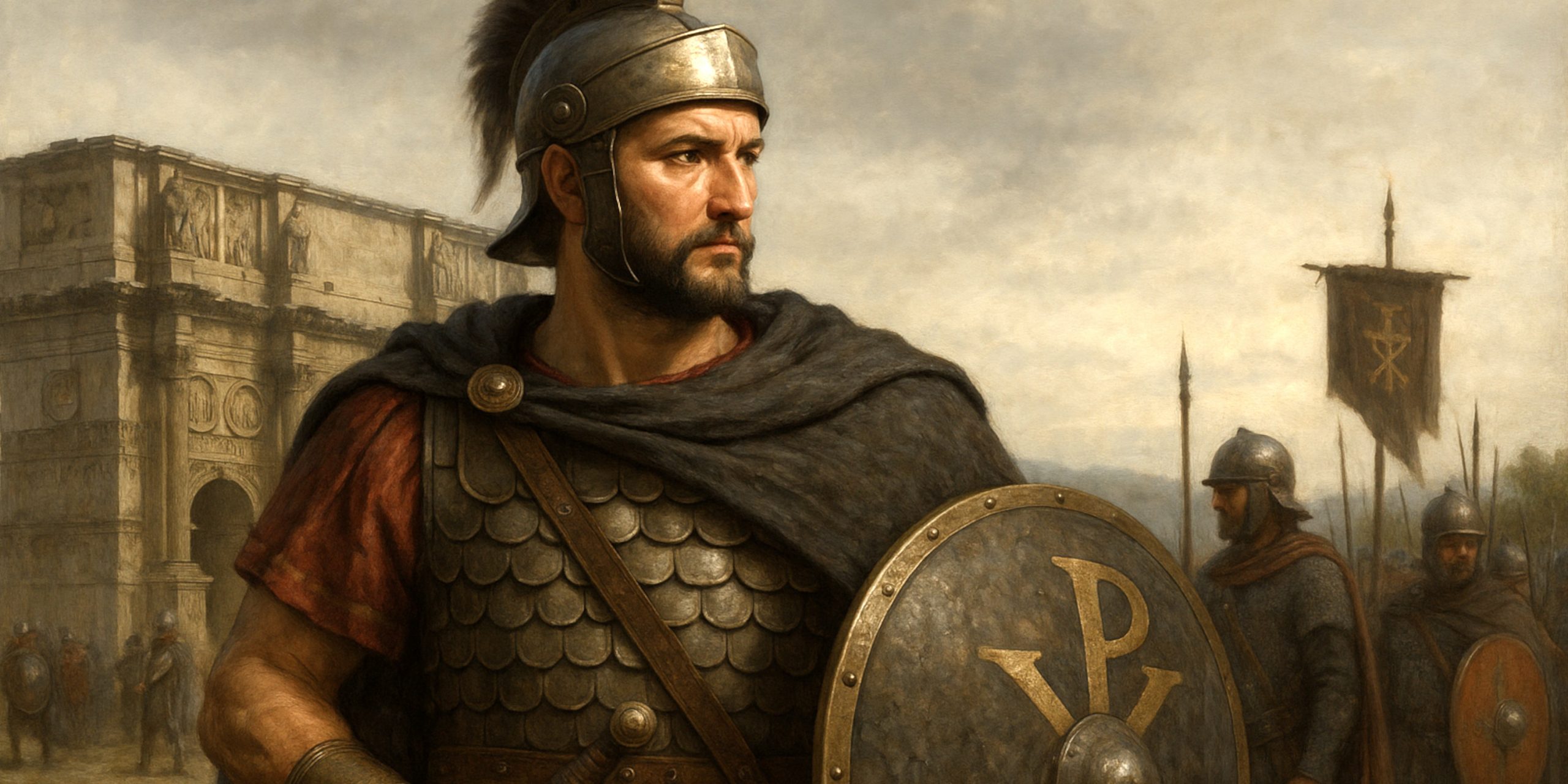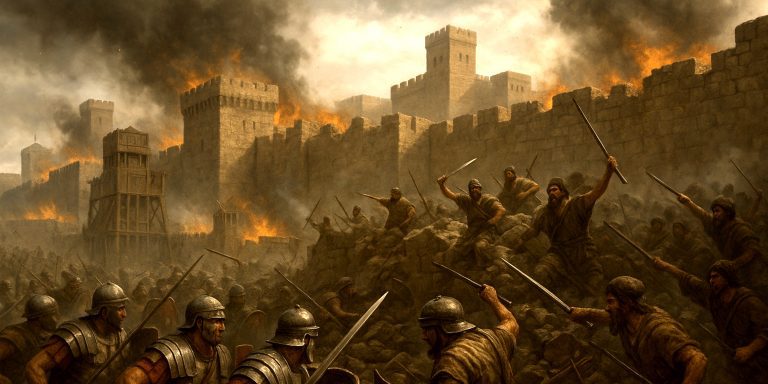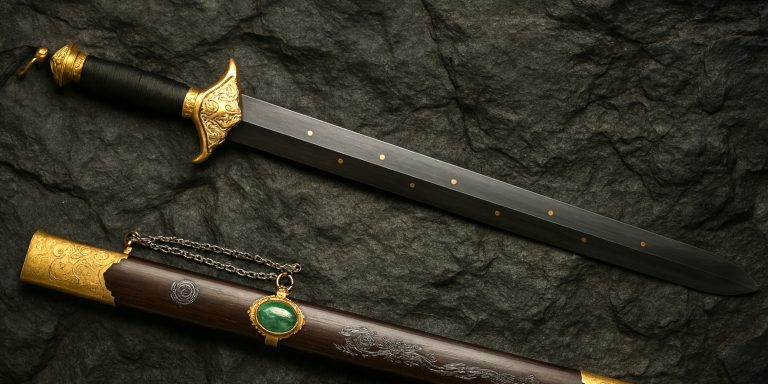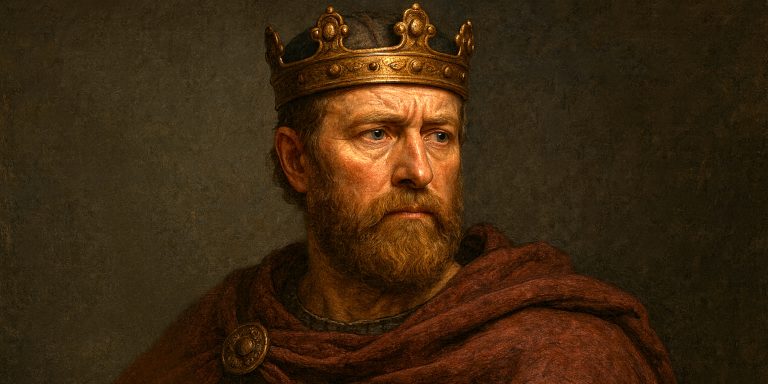
Constantine I, known as Constantine the Great, was one of the most consequential Roman emperors. His reign marked a turning point for the Roman Empire politically, militarily, and religiously. As the first Christian emperor, he laid the foundations for the Christianisation of the empire. He also restructured the army, shifted the imperial centre eastward, and helped stabilise a fragmented realm.
This article explores his military skill, notable battles, the arms and armour of his era, and the latest archaeological insights and surviving artefacts.
Early Career and Rise to Power
Born around AD 272 in Naissus (modern-day Niš, Serbia), Constantine was the son of Constantius Chlorus, a Roman army officer, and Helena, of humble origin. He rose through the ranks under Diocletian’s Tetrarchy system but emerged as a central figure after his father’s death in AD 306. Over the next two decades, Constantine consolidated his position by defeating rival claimants and ultimately establishing himself as sole emperor.
Battles and Military Acumen
Constantine’s military record was formidable. His ability to adapt tactically, control logistics across vast territories, and maintain troop loyalty were central to his enduring success.
Battle of the Milvian Bridge (AD 312)
- Opponent: Maxentius
- Location: Near Rome, across the Tiber River
- Outcome: Decisive victory for Constantine
- Significance: Marked the beginning of Constantine’s sole rule in the West and his embrace of Christianity
Contemporary sources, such as Lactantius and Eusebius, recount that Constantine experienced a vision before the battle. Whether literal or symbolic, it led to his use of the Chi-Rho symbol on military standards.
Battle of Chrysopolis (AD 324)
- Opponent: Licinius
- Location: Near present-day Üsküdar, Istanbul
- Outcome: Victory, ending the civil war
- Significance: Constantine became sole ruler of the Roman Empire
Licinius commanded a numerically superior force, but Constantine used a clever amphibious assault across the Bosporus to divide and overwhelm his enemy.
Military Reforms and Strategy
Constantine reorganised the Roman army, reinforcing the mobile field units (comitatenses) and the frontier troops (limitanei). He reduced reliance on citizen levies and expanded the use of cavalry and mounted archers, particularly in the East. He also fortified major cities, built new roads to support campaign mobility, and bolstered the Danube frontier.
Arms and Armour
Although Constantine’s personal arms have not survived, military equipment of his era is well-attested archaeologically and in Roman art.
Typical Equipment of Constantine’s Troops
| Item | Description |
|---|---|
| Helmet | Intercisa-type helmets became common, featuring reinforced brow bands and cheek guards |
| Body Armour | Lorica squamata (scale armour) and lorica hamata (mail) were prevalent among elite troops |
| Shield | Oval or round shields with painted insignia (vexillum or Chi-Rho for Christian units) |
| Sword | Spatha replaced the gladius as the standard infantry weapon, offering longer reach |
| Spear | Hasta and throwing spears like the plumbata were in use |
| Cavalry Gear | Cataphract-style heavy cavalry armour, including lamellar horse armour, began to appear |
Iconography from coins and reliefs suggests that Constantine’s guard units adopted distinctive crests and Christian emblems, reinforcing loyalty and divine favour.
Religious and Political Legacy
Constantine’s military actions often coincided with religious motives or symbolism. Following his conversion, he issued the Edict of Milan (AD 313), legalising Christianity. He also convened the First Council of Nicaea (AD 325), shaping the doctrinal foundation of the Church.
He refounded Byzantium as Constantinople in AD 330, recognising the strategic and economic importance of the eastern provinces. This move would later prove critical in the survival of the Eastern Roman Empire.
Artefacts and Archaeology
While no confirmed personal belongings of Constantine survive, numerous artefacts and sites provide insight into his reign:
Key Artefacts and Sites:
- Arch of Constantine (Rome): A triumphal arch built after the Milvian Bridge victory, incorporating earlier imperial reliefs. It celebrates Constantine’s divine favour and military skill.
- Statue fragments from the Basilica of Maxentius: These colossal remains in the Capitoline Museums once formed a massive seated statue of Constantine, a political symbol of imperial authority.
- Coinage: Constantine minted numerous coins bearing the Chi-Rho, Sol Invictus, and other political-religious symbols. Many are housed in the British Museum, the Louvre, and the Vatican Numismatic Collection.
- Church of the Holy Sepulchre (Jerusalem): Commissioned by Constantine and Helena, it remains a major Christian site. Excavations there continue to reveal layers of early Christian architecture.
- Constantinople’s remains: The city’s original defensive walls, the Milion marker, and early church foundations reveal the vision behind his imperial centre.
Recent Discoveries:
- Excavations in Niš, Serbia, have uncovered Roman mosaics and possible structures linked to Constantine’s early life.
- At York, where his father died and Constantine was proclaimed Augustus, Roman-era remains continue to be explored beneath the Minster and nearby digs.
- Ongoing studies of coin hoards across Europe and the Levant provide insight into Constantine’s economic and military reach.
The Seven Swords Takeaway
Constantine was a calculating general, a reformer of imperial structure, and a ruler who saw opportunity in both steel and scripture. His military success laid the groundwork for the transformation of Rome into a Christian empire, while his reforms prolonged its cohesion. Artefacts, monuments, and archaeological finds continue to inform our understanding of a reign that reshaped Europe and the Near East.
Watch the documentary:



